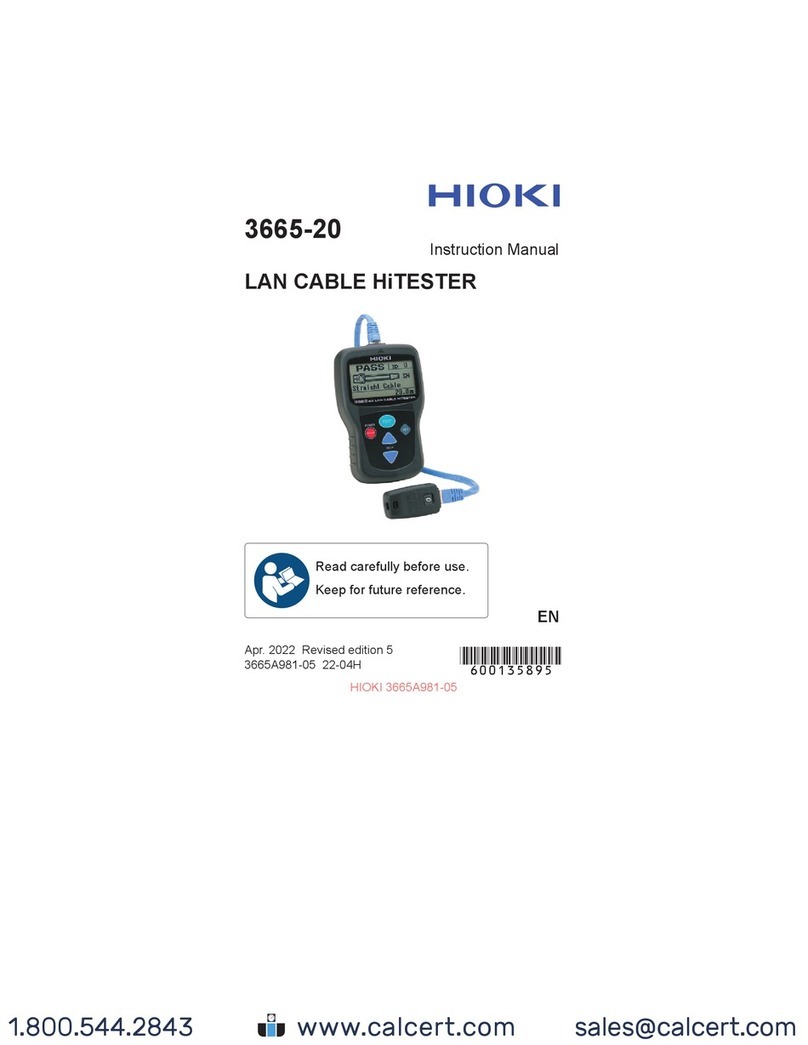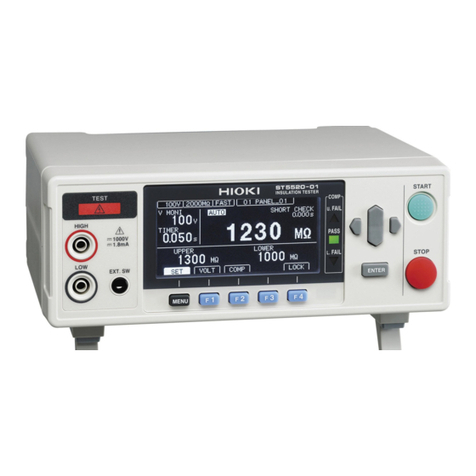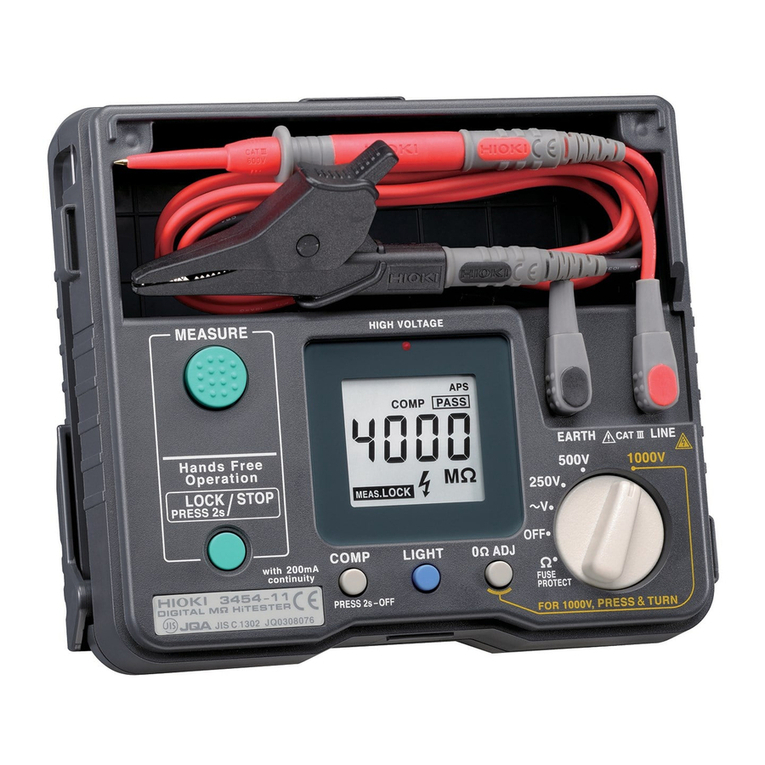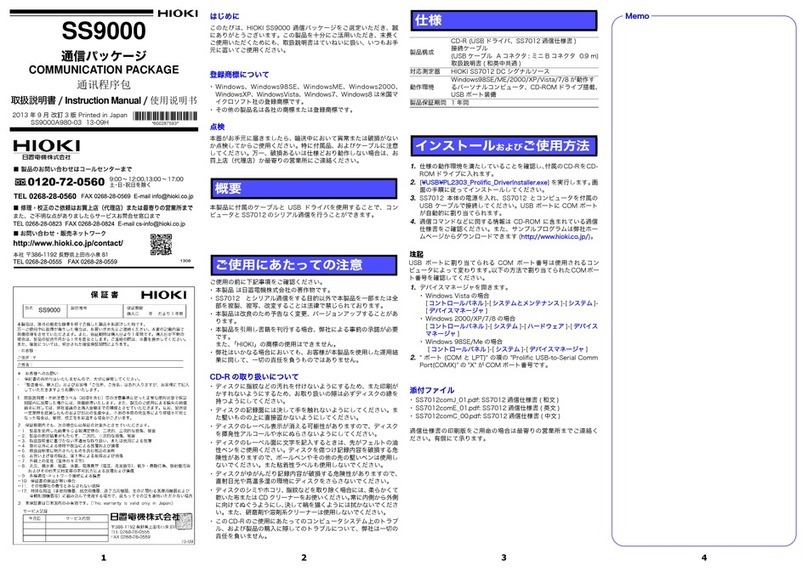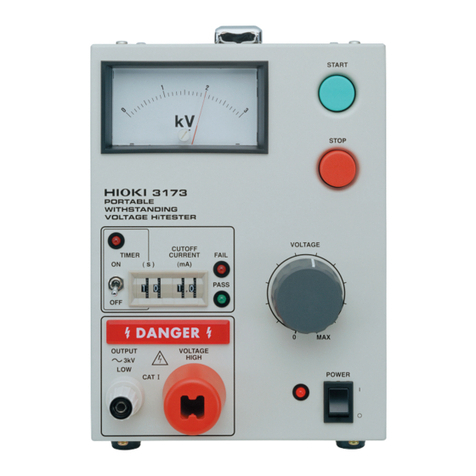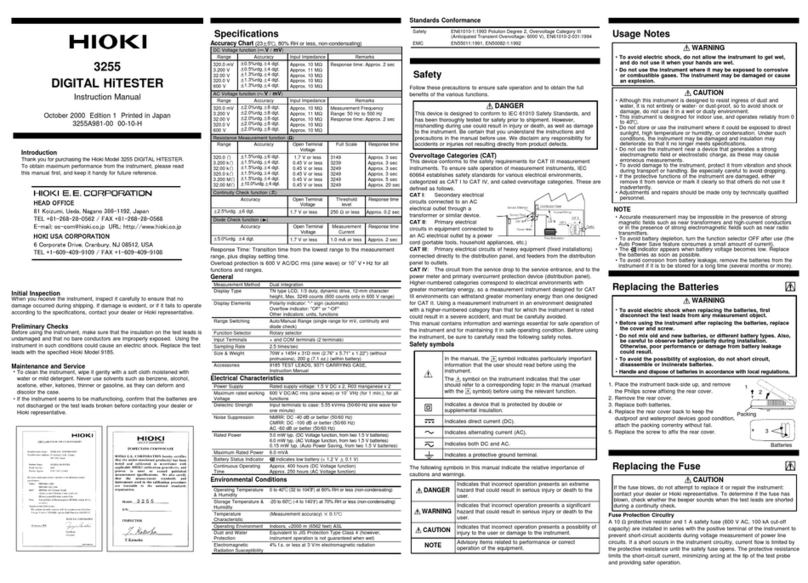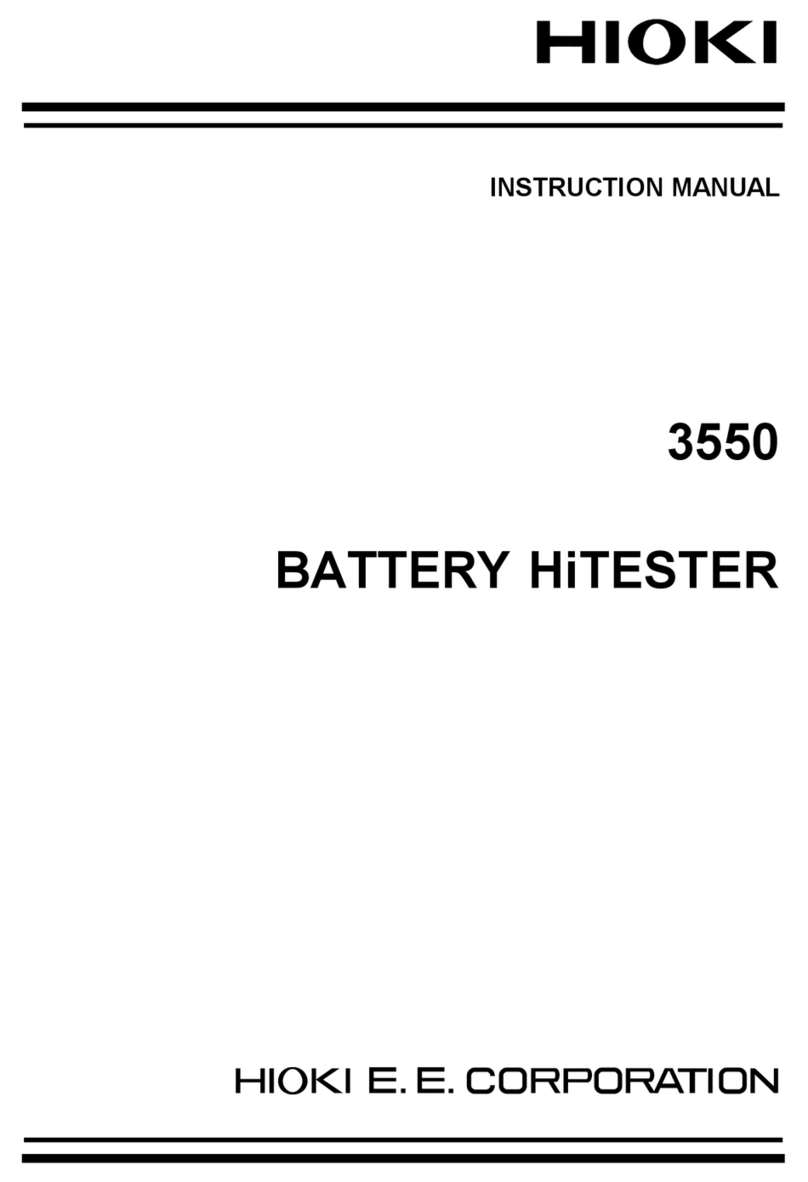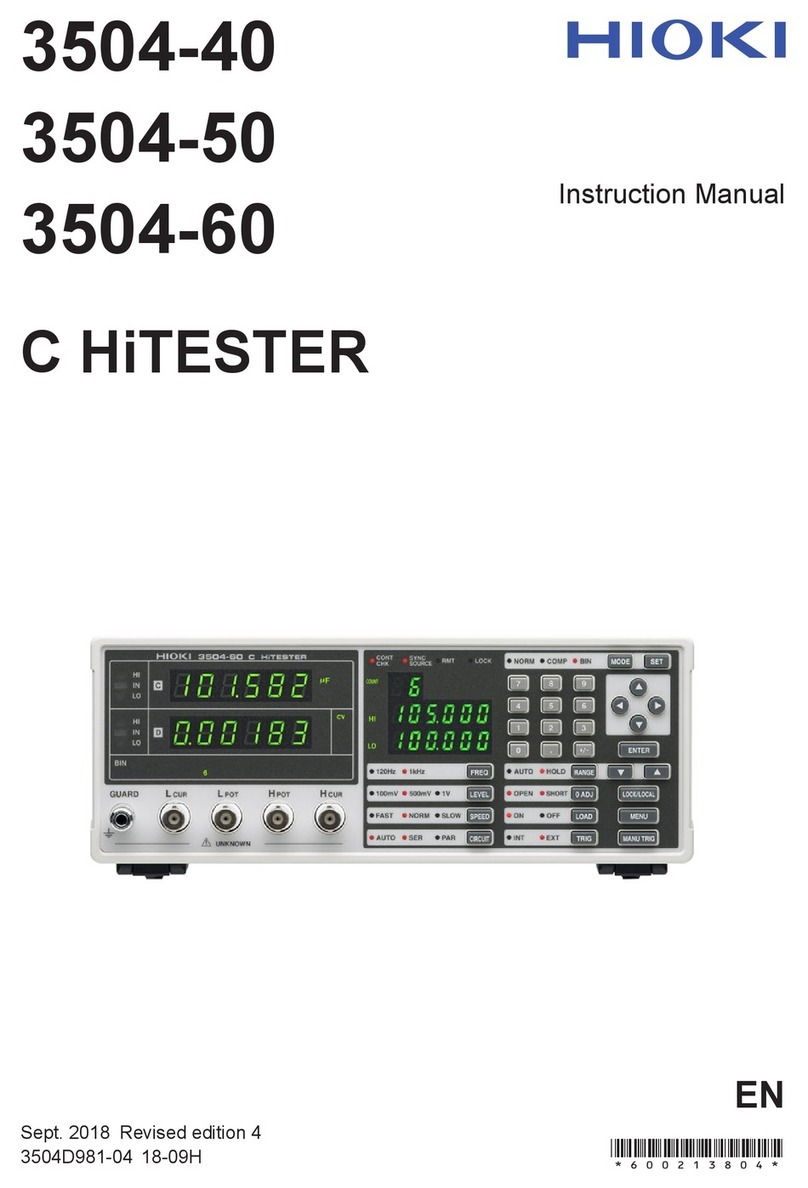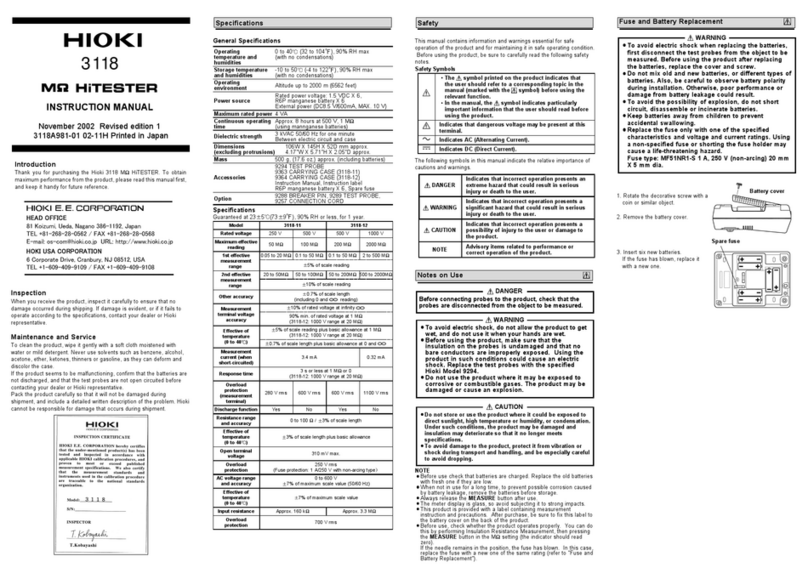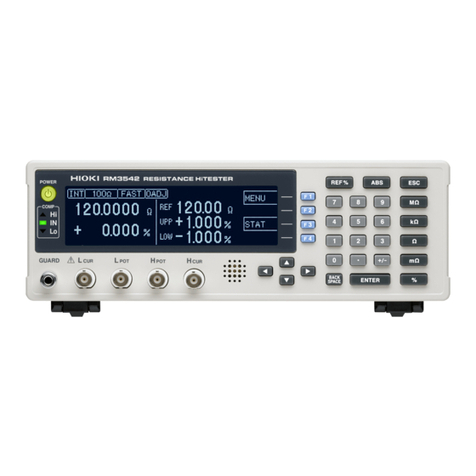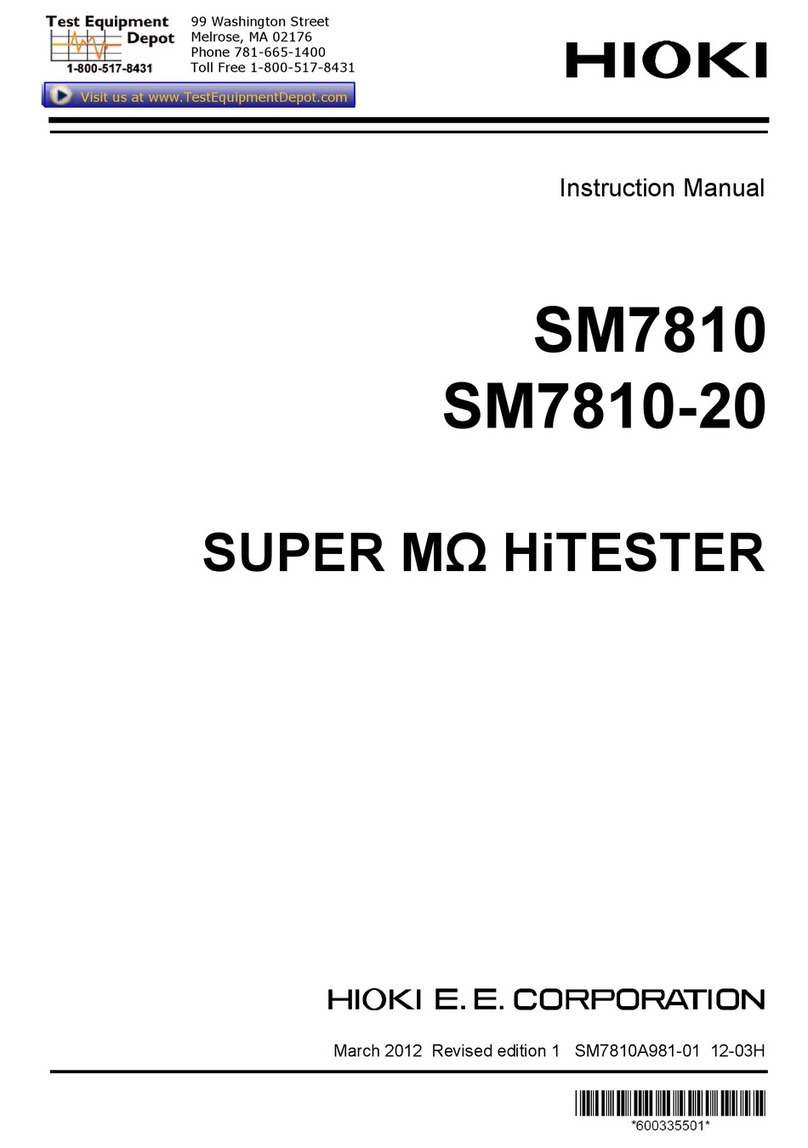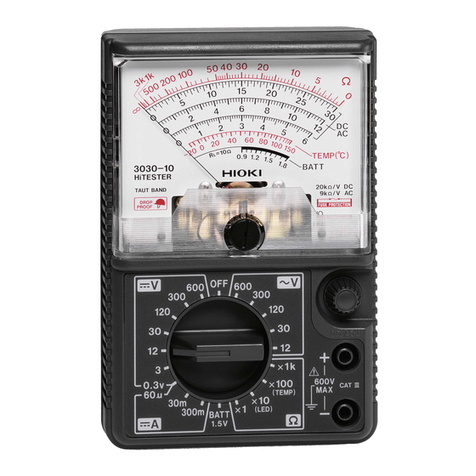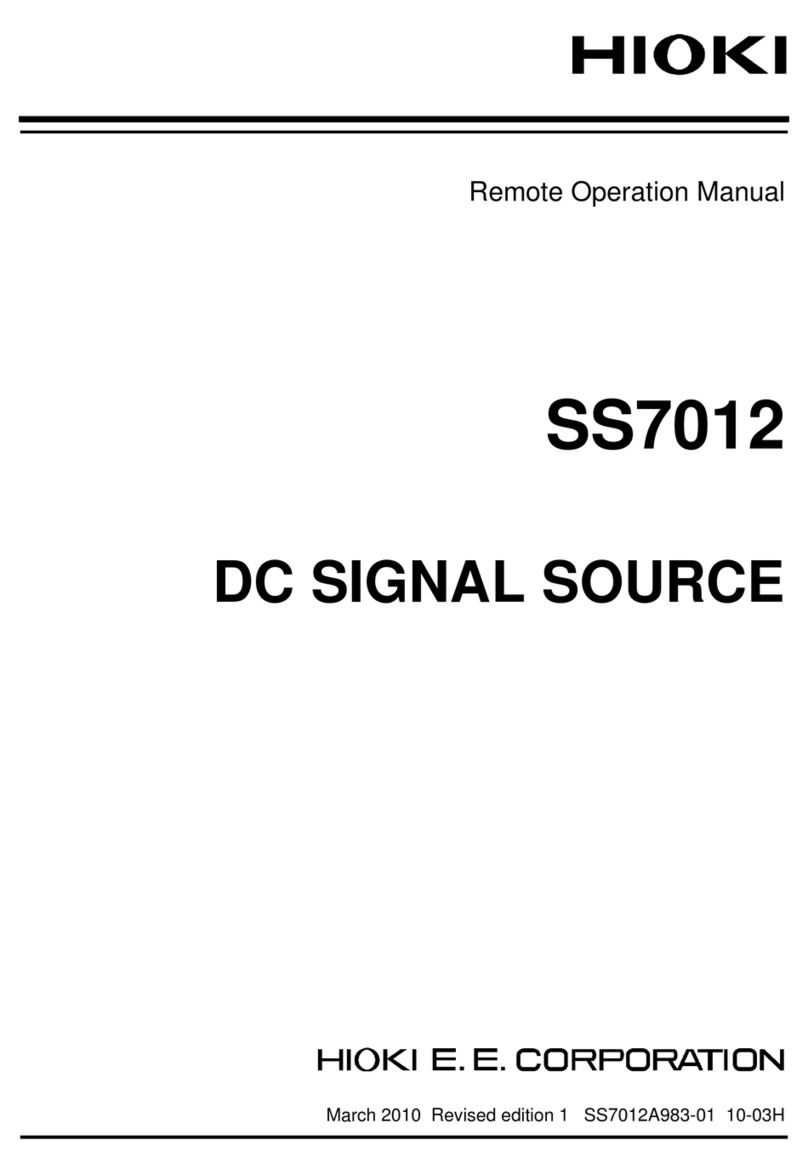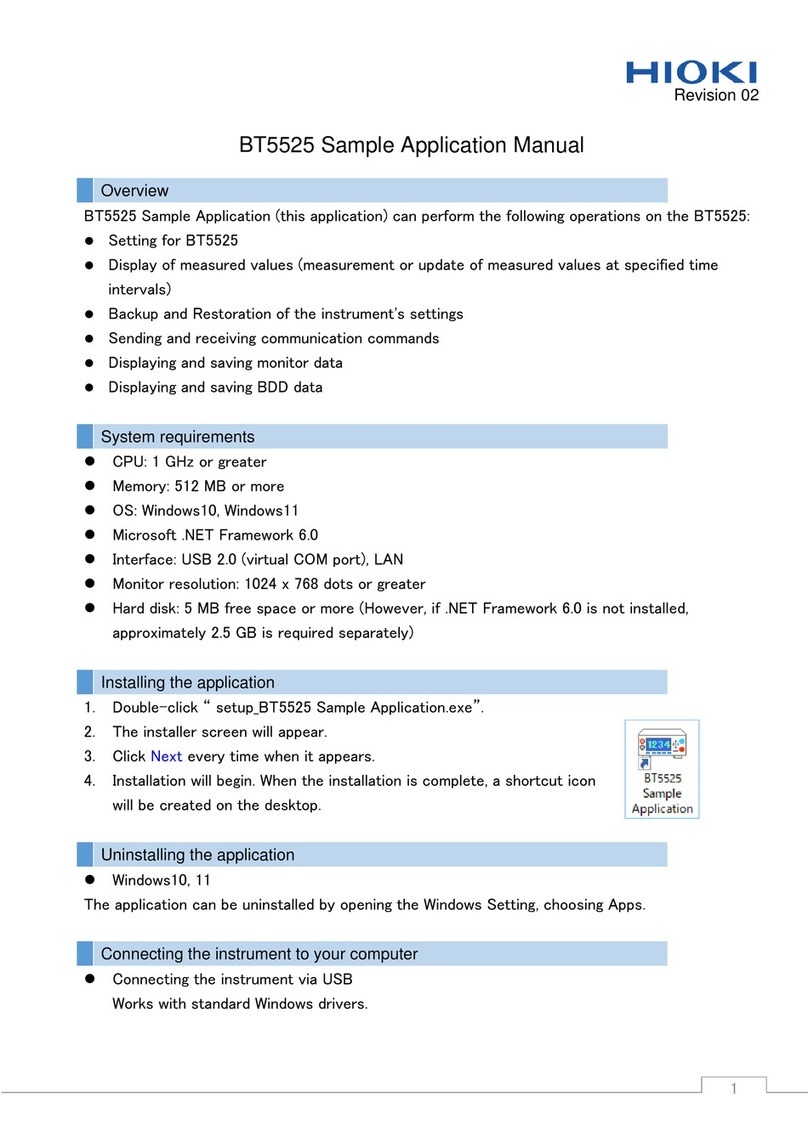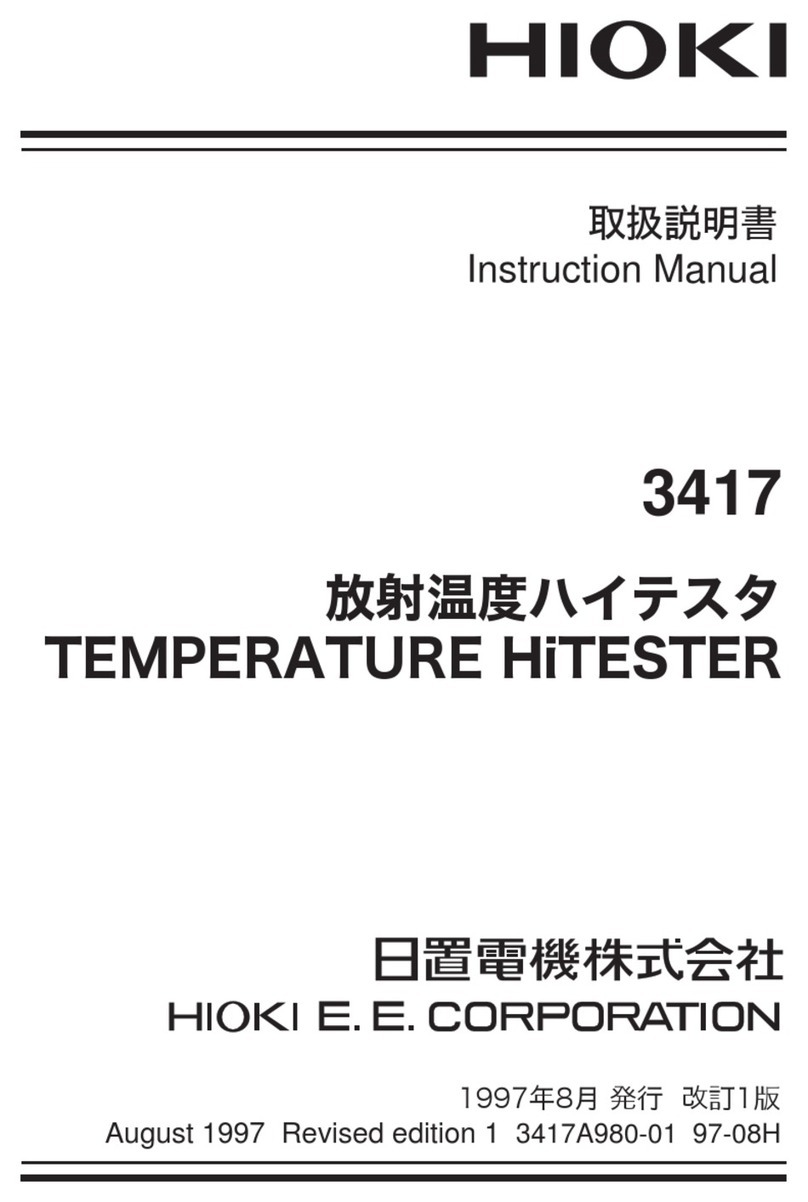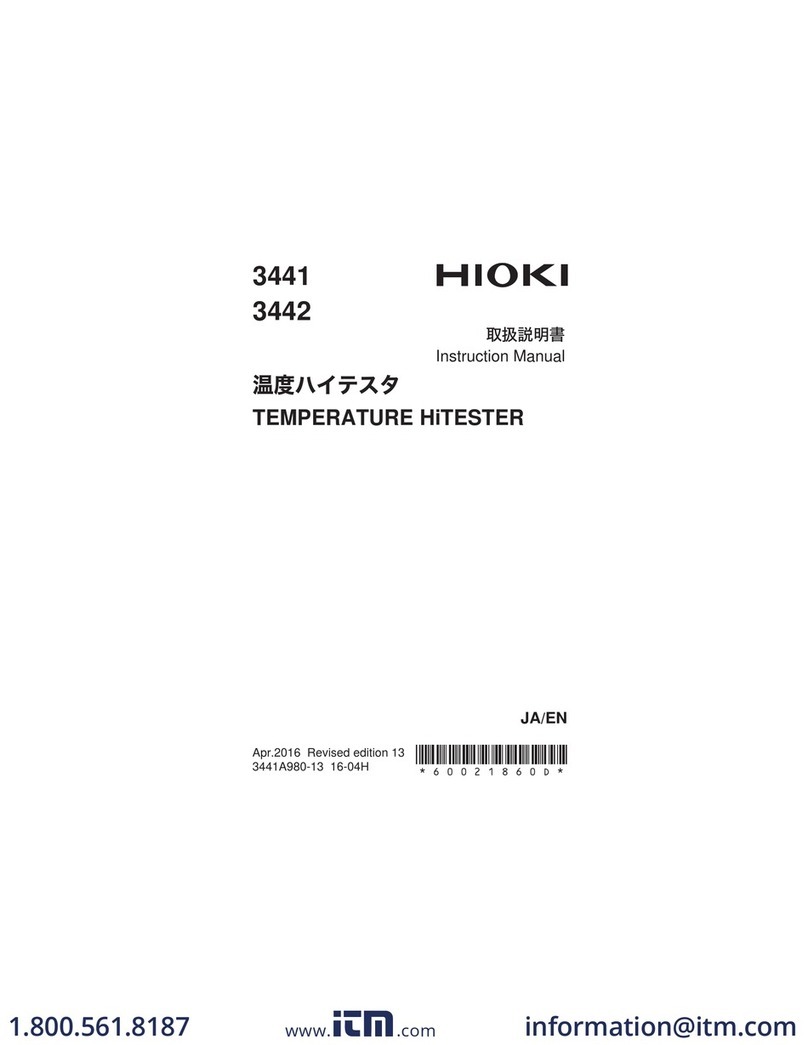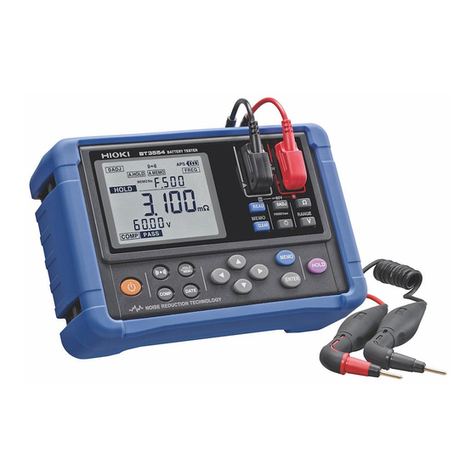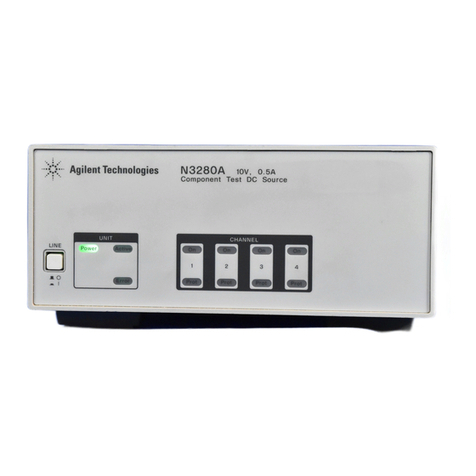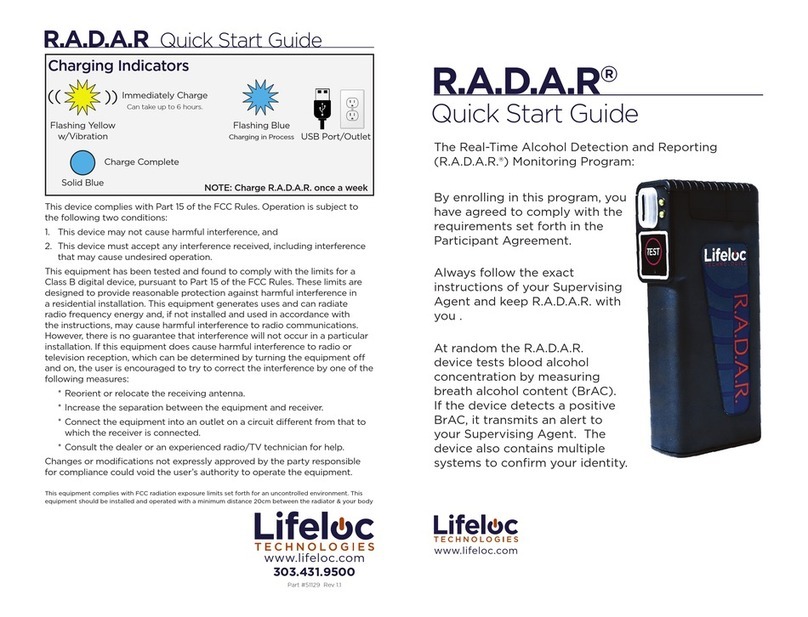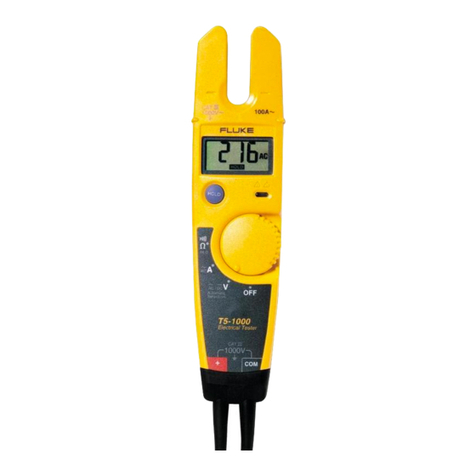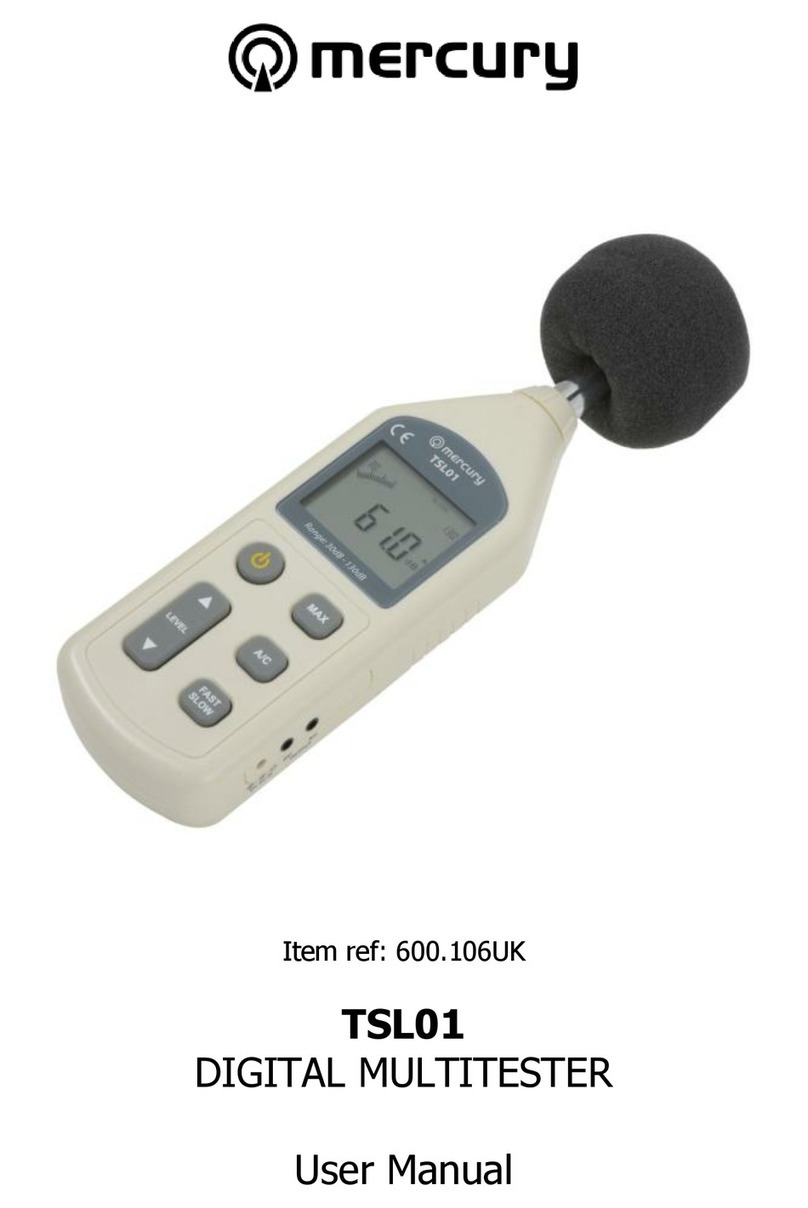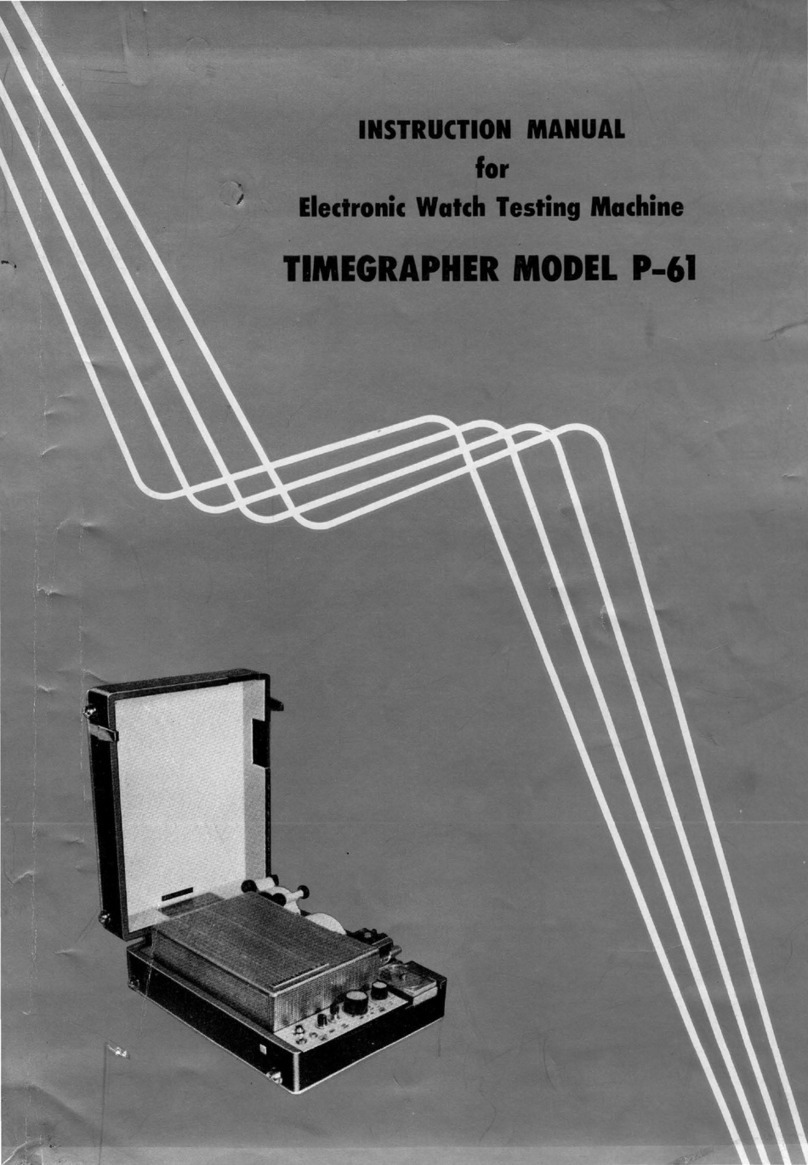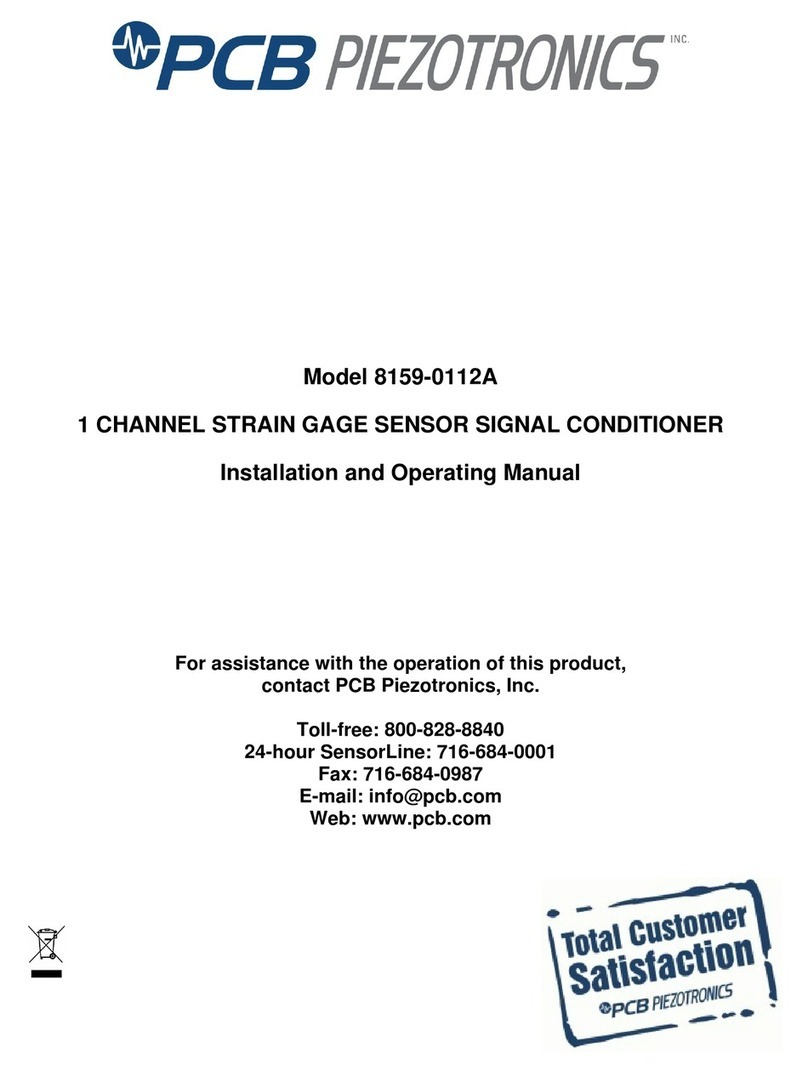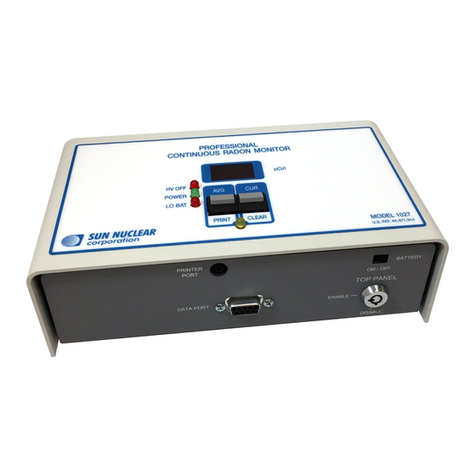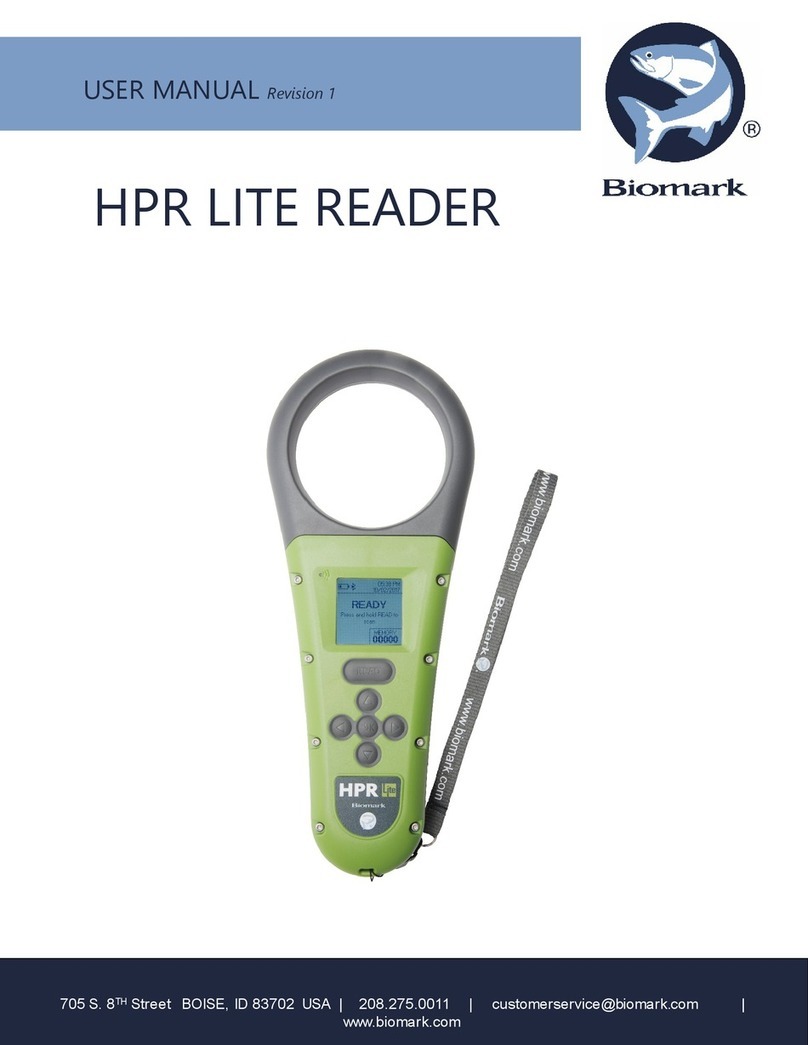Battery and Fuse Replacement
WARNING
To avoid electric shock when replacing the batteries and
fuse, first disconnect the test leads from the object to be
measured. Also, after replacing the batteries, fuse, always
replace the case before using the instrument.
Removing the case back
1. Remove the fixing
screw.
2. Remove the case
back from the upper
part.
3. Replace the
batteries and fuse.
Insert the batteries
with the polarity
correct as per the
battery indication
FUSE
Spare fuse
A good one should always
Attaching the case back
3. Fasten the
fixing screw.
2. Attach the
upper part.
1. Fit the nail
on the edge
of the lower
part.
1. Battery Replacement
WARNING
Do not mix old and new batteries, or different types of
batteries. Also, be careful to observe battery polarity
during installation. Otherwise, poor performance or
damage from battery leakage could result.
Battery may explode if mistreated. Do not short-circuit,
recharge, disassemble or dispose of in fire.
Handle and dispose of batteries in accordance with local
regulations.
To avoid corrosion from battery leakage, remove the
batteries from the instrument if it is to be stored for a long
time.
2. Fuse Replacement
WARNING
Only use fuses of the specified type that is rated for the
specified current and voltage. Using a fuse that does not
meet the specifications, especially of large current
capacity (including a short circuit of the copper wire) may
not cause the shut-off function to operate, and result in
burning, a short circuit, or injury or death.
Fuse specification: F0.5 AH/250 V, with non-arcing
protection, 20 mm x 5 mm dia.
3. Fuse and Test Leads Continuity Check
Specifications (*mark: shared range)
DCV *0.3/3/12/30/120/300/600 V, 20 kΩ/V (0.3
V:16.7 kΩ/V), 2.5% of f.s. reading
ACV 12/30/120/300/600 V, 9 kΩ/V, 2.5% of f.s.
reading (12 V: 4%)
DCA *60 μA, 30/300 mA, internal voltage drop
(nominal value) 300 mV, 3% of f.s. reading
Ω0to3kΩ, central scale 30 Ω, R x 1/R x 10/R x
100/R x 1 k, 3% of scale length
BATT 0.9 to 1.8 V, load resistance 10Ω, 6% of f.s.
reading
Temperature scale -20 to 150 (standard), -20 to 300 (for USA
only), 3% of scale length (with the optional
9021-01 THERMISTOR TEMPERATURE PROBE)
Protective system Short circuit protection of power line by fuse
(up to 250 VAC commercial power input)
NOTE: This system is not for protecting the instrument
from damage but for securing safety.
Overload protection of meter device by diode
Meter Internally magnetized taut band
Fuse F0.5 AH/250 V, 20 mm x 5 mm dia. (non-
arcing type),
Internal resistance Approx. 0.866 Ω
Drop proof One meter to concrete
Standards applying Safety EN 61010
Measurement Category III
(anticipated transient overvoltage 6000
V), Pollution Degree 2
EMC EN 61326
Power supply Rated power voltage 1.5 VDC x 2,
R6P manganese battery x 2
Maximum rated power 0.36 VA
Location for Use Altitude up to 2000 m, Altitude up to 6562 feet,
indoors
Dimensions and mass Approx.95W x 141H x 39D mm, Approx.280 g
Approx.3.74"W x 5.55"H x 1.54"D, Approx.9.9 oz.
Operating temperature
and humidity 0to40 , 32 to 104 , 80% RH max.
Storage temperature
and humidity -10 to 50 , 14 to 122 , 80% RH max.
Period of guaranteed
accuracy 1 year
Maximum input voltage 600 VAC/DC
Accessories L9207-30 TEST LEAD
Spare fuse (F0.5 AH/250 V, 20 mm x 5 mm
dia., non-arcing type)
R6P ( 1.5 V) manganese battery (2)
Instruction Manual
9390 CARRYING CASE
Optional accessory 9021-01 THERMISTOR TEMPERATURE PROBE
Handling of carrying case
Maintenance
Service
Part Names
1.
2.
3.
4.
5.
6.
7.
8.
9.
10.
1. Set the range switch to the proper Ωrange.
Accurate measurement can be made by selecting a range where the
reading will be about the center of the range.
2. Connect the black test lead to the - terminal, and the red one to the +
terminal.
3. Short the test leads, and use the zero ohm adjuster (0 ΩADJ knob) to
adjust the pointer to the 0 Ωscale.
NOTE: If the pointer cannot be adjusted to the 0 Ωscale, replace the
battery.
4. Connect the test leads to the circuit to be measured, and read the
value from the scale.
NOTE: When changing the range, disconnect the test leads from the
object to be measured.
For resistance measurement, the indication may be unstable if
the ends of the test leads are dirty, and the contact is poor. If
the indication is unstable, increase the contact pressure, or
clean the ends of the test leads by wiping with alcohol or similar
solvent.
5. In order to obtain the true value, it is necessary to multiply the reading
shown by the factor for the range in use.
1. Set the range switch to the Ωx 10 (LED) range.
2. Connect the test leads to both sides of the LED to be tested.
3. The LED has polarity, so unless it light in 2., try reversing the test
leads connections.
4. When it lights, the pointer deflect, however a reading has no meaning.
NOTE: The internal battery of the Ωmeter has positive polarity in the -
terminal. Therefore, it is right to connect the red (+) test lead to
the cathode side of the LED, and the black (-) one to the anode
side.
1. Set the range switch to the Ωfunction, R x 10 (TEMP) range.
2. Connect the two black plugs of the three plugs of the temperature
probe to the + and - terminals.
3. Use the zero ohm adjuster (0 ΩADJ knob) to adjust the pointer to the
0Ωscale.
4. After 0 Ωadjustment, change the plug in the + terminal to the red
plug.
5. Connect the temperature probe tip to the measurement place, and
read the value from the temperature scale.
REFERENCE The time for indication and measured temperature vary
depending on the condition of heat conduction to the
probe.
1. Set the range switch to the BATT 1.5 V range.
2. Connect the black test lead to the - terminal, and the red one to the +
terminal.
3. Connect the test leads to both sides of the battery to be measured
(the red test lead to the positive side and the black one to the
negative side), and read the measurement value.
Removed a battery from a set as much as possible, and measure it
alone.
REFERENCE This measures the voltage with a 150 mA (load resister
10 Ω) current in order to measure the battery when it is
being used.
When this is compared with measurement in the 3 V
DC range (no-load voltage value), the lower voltage
value is indicated for the more consumed battery.
1. Remove the case back.
2. Replace the batteries with new ones.
3. Attach the case back.
1. Remove the case back.
2. Replace the fuse with a new one.
NOTE: A spare fuse is provided inside the instrument as shown.
Be sure to supply a new spare fuse if the spare fuse is used to
replace a blown fuse.
3. Attach the case back.
1. Connect the black test lead to the - terminal, and the red one to the +
terminal.
2. Set the range switch to the Ωx 1 k range, and short the test leads.
3. If the pointer deflects, the fuse and test leads conduct (are not blown
and damaged).
If the pointer does not deflect, the test leads may be damaged.
Check again after replacing the fuse.
When the instrument is used or stored with the cover of the carrying
case incompletely closed, the cover can be deformed depending on
ambient temperature. This may cause that the cover cannot be closed.
Close the cover completely to prevent it from being deformed. To close
the cover completely, press the cover vertically, engaging the edge of the
cover with that of the lower case.
Gently wipe dirt from the surface of the instrument with a soft cloth
moistened with a small amount of water or mild detergent.
Do not try to clean the instrument using cleaners containing organic
solvents such as benzine, alcohol, acetone, ether, ketones, thinners, or
gasoline. They may cause discoloration or damage.
If the instrument is not functioning properly, check the batteries, the test
leads wiring, and fuse blowing. If a problem is found, contact your dealer
or HIOKI representative. Pack the instrument carefully so that it will not
be damaged during transport, and write a detailed description of the
problem. HIOKI cannot bear any responsibility for damage that occurs
during shipment.
Meter Nomenclature
1. Panel 2. Pointer 3. Case back 4. Face plate
5. Range selector switch 6. Scale plate 7. Zero adjuster
8. Zero ohm adjuster 9. Positive (+) terminal
10. Negative (-) terminal

